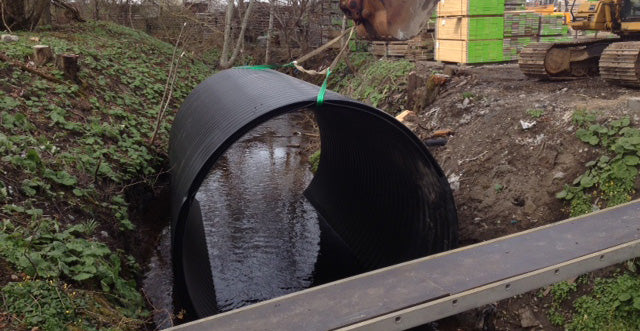Dependable Pad Construction for Your Project Demands
Dependable Pad Construction for Your Project Demands
Blog Article
Culvert Setup Made Easy: Step-by-Step Guide for Success
Setting up culverts may appear like an uncomplicated job, yet making sure a successful end result calls for cautious planning and execution. From choosing the suitable culvert dimension to incorporating appropriate drain steps, each action in the setup procedure plays an essential role in the performance and durability of the culvert system. By complying with a systematic approach and taking notice of crucial details, the setup can proceed efficiently, decreasing potential issues down the line. Stay tuned to reveal the essential steps and factors to consider that can make culvert setup a smooth and effective venture.
Picking the Right Culvert Dimension
Picking the suitable culvert size is vital for ensuring efficient water circulation and architectural stability in culvert installation projects - Pad Construction. The size of the culvert directly influences the circulation ability of water with the structure. A culvert that is too small can bring about flooding and overflow, while one that is also huge may result in decreased water rate, potentially causing debris accumulation and blockages
To establish the best culvert dimension, aspects such as the watershed location, optimal flow prices, and hydraulic performance requirement to be meticulously taken into consideration. Computations based on these criteria aid in selecting a size that can sufficiently take care of the expected water volume while lessening the threat of clogs and structural failure.
It is necessary to seek advice from engineering standards and standards to make certain that the picked culvert size fulfills the job requirements and local guidelines (Pad Construction). By selecting the best culvert dimension, task supervisors can enhance water flow, prevent possible problems, and enhance the overall effectiveness and longevity of the culvert installation
Preparing the Setup Website
Reliable culvert setup necessitates meticulous preparation of the installation site to guarantee optimum architectural support and capability. Before commencing the installment procedure, it is crucial to remove the site of any kind of debris, vegetation, or obstructions that can restrain the culvert's placement.
Furthermore, it is necessary to think about factors such as soil make-up, groundwater degrees, and ecological influences when preparing the installation website. Carrying out a comprehensive site evaluation can help recognize any kind of possible obstacles or dangers that might affect the culvert's performance. By making the effort to prepare the setup site appropriately, you can aid guarantee a successful culvert installation that satisfies structural demands and guarantees long-term capability.
Putting the Culvert Appropriately

The grade at anchor which the culvert is positioned is essential for preserving an appropriate slope for water circulation. In addition, the culvert must be oriented properly to ensure that the inlet and outlet are in the proper areas. Pad Construction.
Backfilling and Compacting the Dirt
Proper backfilling and compaction of the soil around the culvert is necessary to make certain security and avoid potential problems in the future. When the culvert is properly placed, the next important step is to backfill the location around it with suitable material.
After placing the backfill product, it is essential to portable it in layers of consistent thickness. Using a compactor or a mechanical tamper, portable the soil gently to stay clear of harming the culvert. Compaction assists in minimizing the chances of settlement and makes sure consistent support around the culvert. It is crucial to small the dirt uniformly on all sides of the culvert to maintain its architectural integrity.
Correct backfilling and compaction not just supply security to the culvert however likewise aid in stopping soil disintegration and maintaining the durability of the culvert system.
Guaranteeing Correct Water Drainage Integration
Integrating efficient drainage options plays a vital function in the overall functionality and longevity of culvert installments. Correct drain assimilation is vital for taking care of water flow, protecting against disintegration, and guaranteeing the structural stability of the culvert system. To achieve this, it is essential to create a detailed drain plan that considers elements such as the volume of water anticipated, the topography of the area, and the kind of dirt present.

Furthermore, integrating functions like erosion control measures, such click here for more info as riprap or plant life, can even more enhance the performance of the water drainage system. By carefully intending and applying these water drainage options, culvert installations can function successfully and hold up against the examination of time.
Final Thought
Finally, correct culvert installation is important for maintaining efficient water drainage systems. By choosing the appropriate culvert size, preparing the setup website, placing the culvert correctly, backfilling and compacting the dirt, and making certain correct drainage integration, success can be attained. Adhering to these actions will help make sure the longevity and performance of the culvert, ultimately adding to the general success of the drainage system.
Report this page